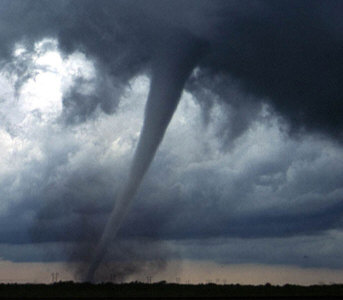
Knowing the weather is an important skill to any human being. We have been battling nature’s forces throughout our existence in this world. It surely is one factor of life that is impossible to control or even sometimes predict. It does not matter if you spend your days outside or indoors, the weather patterns are surely going to affect you in one way or another. I have lived in Lubbock, TX for almost 3 years now, and I can confess that I despise its variant weather conditions. In a town where snow, rain, and sunshine all occur in the same day, the weather has acquired great popularity in everyday conversation, good or bad.
Weather is defined as the atmospheric conditions at a specific time. A thunderstorms, hurricanes, blizzards, or even small winds are phenomena that are considered to be weather patterns. Weather is not to be confused with climate. Climate is a set of weather conditions within an area over a long period of time, such as 10-20 years. While today we might have a rainy day in Lubbock, TX, the climate for the area is considered to be semi-arid. The time of the year, geographical location, and atmospheric pressure measurements are big clues to determining the weather patterns in a region.

Lubbock’s latitude places it close to the 30° where the major deserts of the world are located. A reason for the dryness of the area relies on the energy delivered by the sun, wind patterns, and topographical patterns surrounding the Hub City. As the energy of the sun radiates towards the Earth, it arrives at different concentrations throughout the planet due to its spherical shape. The radiation concentration is higher at the equator where it arrives directly. Air in the area heats up and decreases its density. As this happens, its rises up the atmosphere and travels up and down the latitude of the earth to the 30° lines north and south. There it cools off, and drops down to the Earth. Because cold air can not hold moisture, the air that drops on Lubbock is very dry. As the air near the Earth warms up, it will absorb most of the moisture thus a reason for the arid conditions around the 30° latitude lines. The Rocky Mountains to the west block much of the moisture that travels from the Pacific Ocean. As moist air moves up a mountain, it decreases in temperature and releases its water into the west sides of the Rockies creating a rain shadow effect on the plains in the central region of the country. Lubbock is located west of the 100° west longitude line, placing it far enough from the Atlantic Ocean to miss most of the moisture and weather control it provides.
So far we have discussed the causes for the semi-arid climate found within the Texas Panhandle, but based on this information one cannot predict the weather conditions. As the northern hemisphere of the Earth is warmed up in the spring by its increased proximity to the sun, winds begin to move horizontally following similar patterns to the vertical wind currents described above. This eventually creates areas of high and low barometric pressure, the force of the weight of air against the surface of the Earth. Areas of high pressure are those where cold air condenses and accumulates within the atmosphere. Air within these areas tends to move naturally into pockets of low pressure where the air is warm , expanded and thus less dense. The warm air rises, picking up with it moisture that it transports until it is cooled enough to release the moisture and begin to descend into areas of high pressure.
You have probably have heard the meteorologist on television talking about high pressure currents, low pressure currents, and cold fronts. Well now you have an understanding of the patterns present within between the pressures, but still what happens within each? Low pressure systems are those in which warm weather and light winds are present. When a high pressure system arrives, one can expect winds, colder temperatures, and sometimes rain followed by a set of lighter winds and cold temperatures. The initial patterns of rough weather are characterized as the cold front, the border between the opposite systems.

Don’t have a barometer handy to measure atmosphere pressure patterns? No worries! There is a really simple way to measure these patterns without the scientific tools that meteorologists use. One can easily track these systems by merely looking at the clouds. Cirrus stratus clouds are the light fish-scale like clouds that are found high in the atmosphere. These are the first to appear when a cold front is approaching an area, and can be seen up to a day before the arrival. Cold fronts carry mostly cumulonimbus clouds which are storm clouds that range from various patches covering the sky to a mantle. After the cold front passes, one is more likely to see cumulus clouds with are similar to the fluffy clouds we are familiar with. The presence of these in combination may vary based on the location within the cycles. However, predicting the weather can be made easy in one pays attention.
I attempted to predict the weather this last week, and found that my predictions were pretty accurate! Wednesday in class, we were blasted by strong cold winds blowing from the northwest. I could see cumulonimbus clouds cover the sky. Easy, we were experiencing a cold front. That meant that Thursday was going to be a warmer day with slow winds. Indeed, I decided to wear shorts on Thursday and was not surprised by blasting cold air. Friday was again warm, with temperatures up to the 80's. However, towards the end of the day one could see cirrus stratus clouds up high. Indeed, the weekend ended with another cold front that delivered high winds. I will not consider myself a meteorologist, still at least now I understand the excitement associated with weather predictions.


